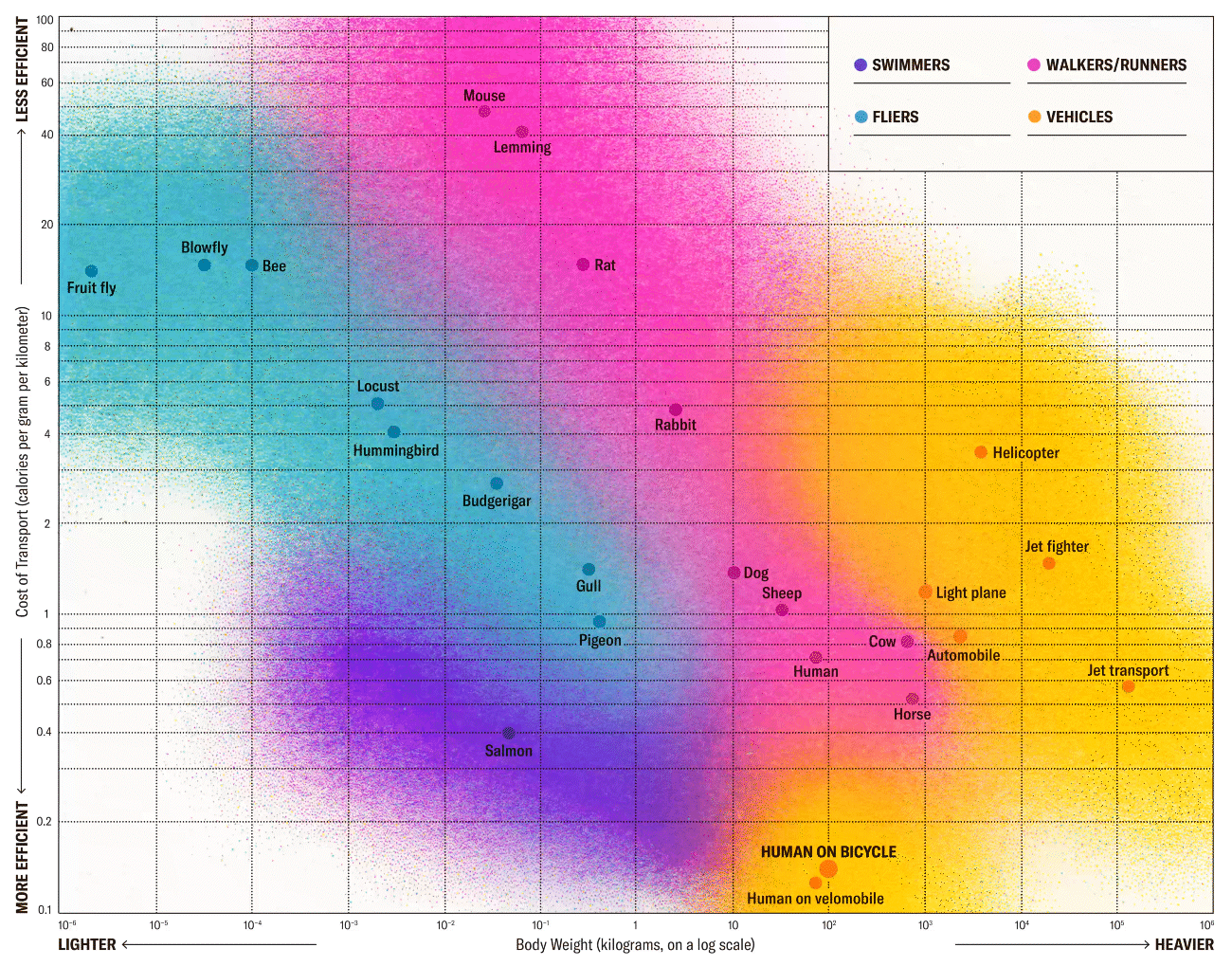A Human on a Bicycle Is among the Most Efficient Forms of Travel in the Animal Kingdom

Love this -> A Human on a Bicycle Is among the Most Efficient Forms of Travel in the Animal Kingdom
Travel involves two main expenditures of energy: fighting gravity and propelling yourself forward. Most terrestrial animals must expend energy first to stand up, then to take each step forward. (Longer-legged land creatures tend to be more efficient because they get more distance out of each step, which explains why mice are so inefficient.) Flying animals, though, can move forward cheaply by gliding through the air, carried more by currents than by their own power. Swimming animals can similarly glide through water while letting their natural buoyancy minimize the need to fight gravity.
Bikes allow us terrestrial folk to be more like fish. Wheels, a simple machine, let us coast without putting in power by pedaling, and the rigid frame supports the sitting rider against gravity. “They turn humans into this hyperefficient terrestrial locomotor because they make being on land more like swimming,” says Tyson Hedrick, a comparative physiologist at the University of North Carolina at Chapel Hill. The main drawback is our clunky human shape; bicyclists aren’t streamlined like bluefin tuna, so they must overcome more drag. Hedrick calculates that bicycles with an aerodynamic shell, called velomobiles, can let humans move with even more aquatic efficiency.
Yet another reason to bike more.



